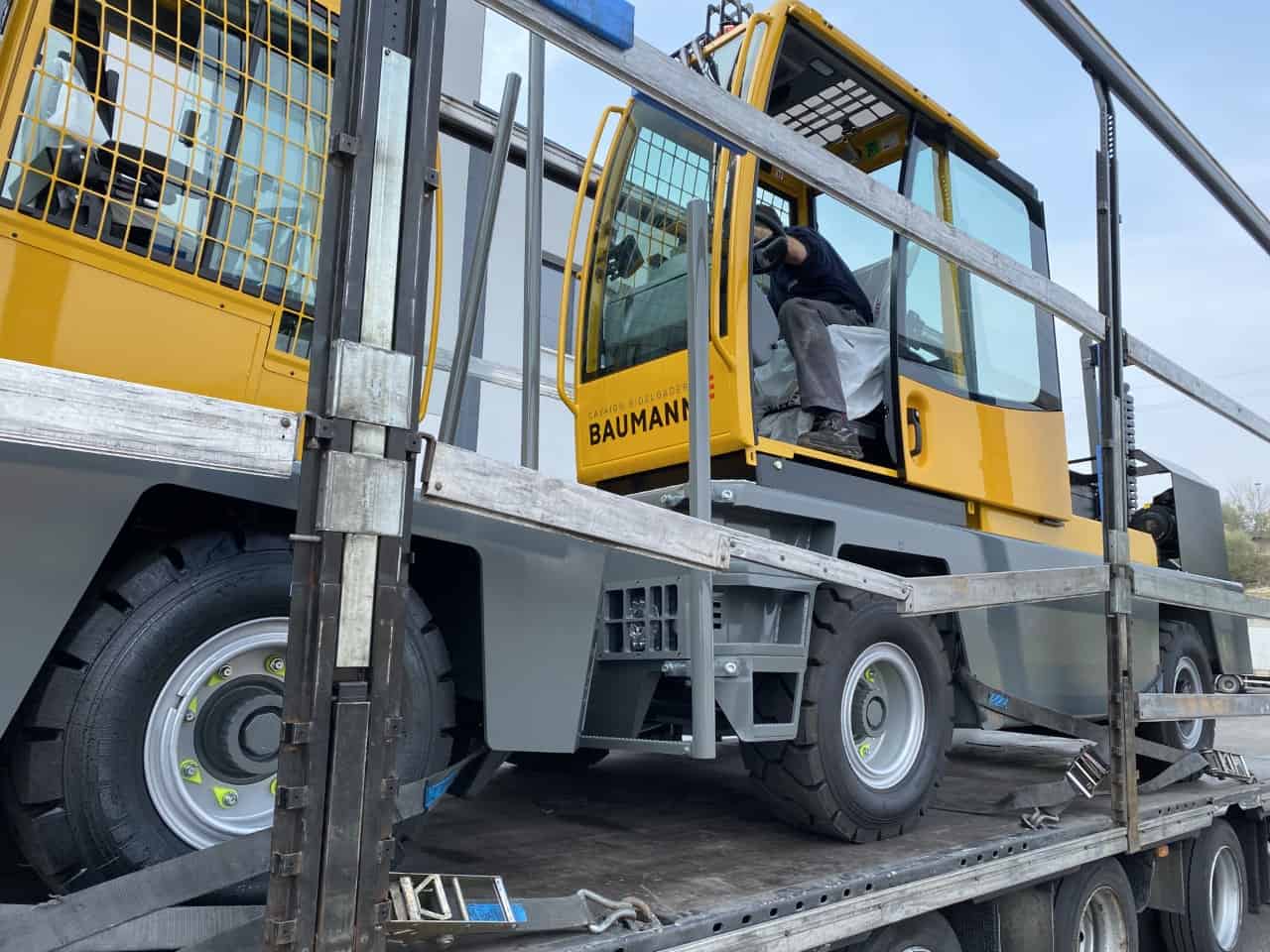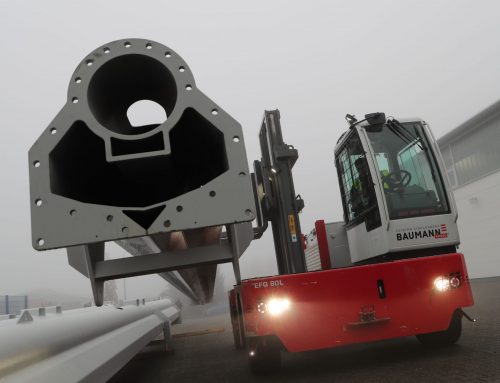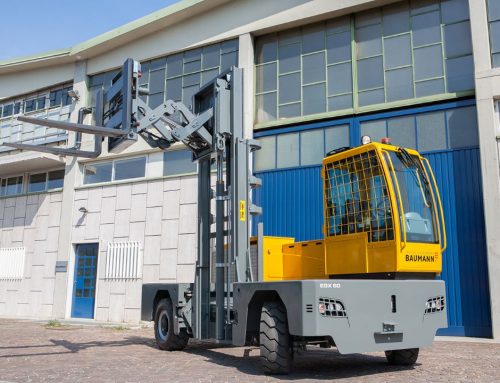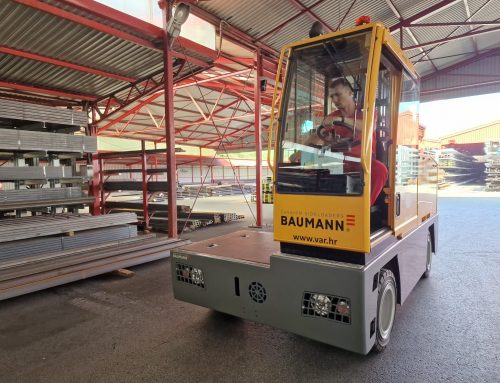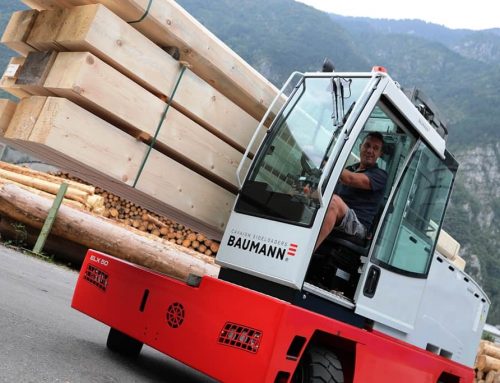Most sideloaders spend their working lives on the site to which the machine is delivered, but occasionally you will need to transport a sideloader. Multi-site operators in particular may find the need to move their fleet across the country or even across borders.
It’s not a new phenomenon. When Mr Baumann took his first demonstration sideloader unit to Austria from the factory in Italy, it was delivered to the first potential customer, then driven on public roads overnight, by Mr Baumann himself, to the next prospect.
Like forklifts, it is perfectly possible to register sideloaders for the road, with electric models, like the EGX and the ELX range even avoiding road tax in many territories.
Recently a demonstration siteloader was transported a couple of miles in Canada along the public roads without trouble and some Swiss sawmills are located in towns where crossing public roads is a daily necessity.
Brake lights and indicators are required, and the operator must have a valid driving license, and in different regions the local laws may dictate the maximum distance a machine can travel between sites.
With a top speed of 12 mph, a Baumann sideloader is capable of travelling a reasonable distance (assuming the roads have no minimum speed limits) and diesel models could theoretically travel around a 100 miles on a full tank.
In reality, half that distance – 50 miles in one single trip – would probably be the maximum recommended, as constant maximum revs would raise the engine temperature and higher temperatures in the hydraulic oil pumps could prompts leaks.
Transporting Sideloaders Over Longer Distances
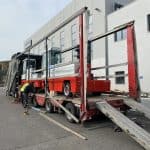 For the most part, trucks are moved across larger distances by low loaders. The lorry typically has a residual capacity of 20 to 22 tonnes, depending on the type of loading ramp. They should have a 10% tolerance, so checking the sideloader’s rating plate for the truck’s combined weight is advised.
For the most part, trucks are moved across larger distances by low loaders. The lorry typically has a residual capacity of 20 to 22 tonnes, depending on the type of loading ramp. They should have a 10% tolerance, so checking the sideloader’s rating plate for the truck’s combined weight is advised.
A 5 tonnes capacity machine would typically weigh 10 tonnes, or 12 tonnes if electric, whilst a 7 tonnes capacity electric machine around 13.25 tonnes.
For the most part, specialist transport companies will know, or can be advised on, where special straps are required to secure the machine, with additional consideration for masts, forks, cabins and other moving parts.
When we are transporting a sideloader, a truck is usually loaded by one person, whilst another observer looks on to ensure no damage or problems are caused.
Transporting sideloaders across borders means special rules for tax or import duties.

Within the EU, trucks can travel across borders without much in the way of paperwork. To the UK, a Notification of Vehicle Arrival document is completed which means it can be registered for future road use, whilst a customs declaration documentation for HMRC means it is registered with the tax authorities, even though at present, the rules mean no import duty is required.
Similarly, a flat $75 charge is levied for a brokerage fee when trucks cross the US/Canadian border, with a US merchandise processing fee also required depending on the value of the shipment.
A final word of advice is to ensure the sideloader has enough fuel, charge or a slave lead, to make it possible for it to be unloaded at its destination, as failure to do so can be more than a little frustrating! Imagine moving a sideloader all that way to not be able to unload at the other end!
Don’t just take our word for it…
The message that has emerged from customers over the past few decades has been the quality, strength and reliability of the Baumann sideloaders. The company’s long-term approach puts real emphasis on the quality of manufacture and product reliability. With high-quality support, they have a new machine that improves their operation, reduces waste, provides greater comfort and productivity, as well as getting immediate fuel and maintenance savings.
Get in touch with us here to talk about getting a new or used sideloader.

